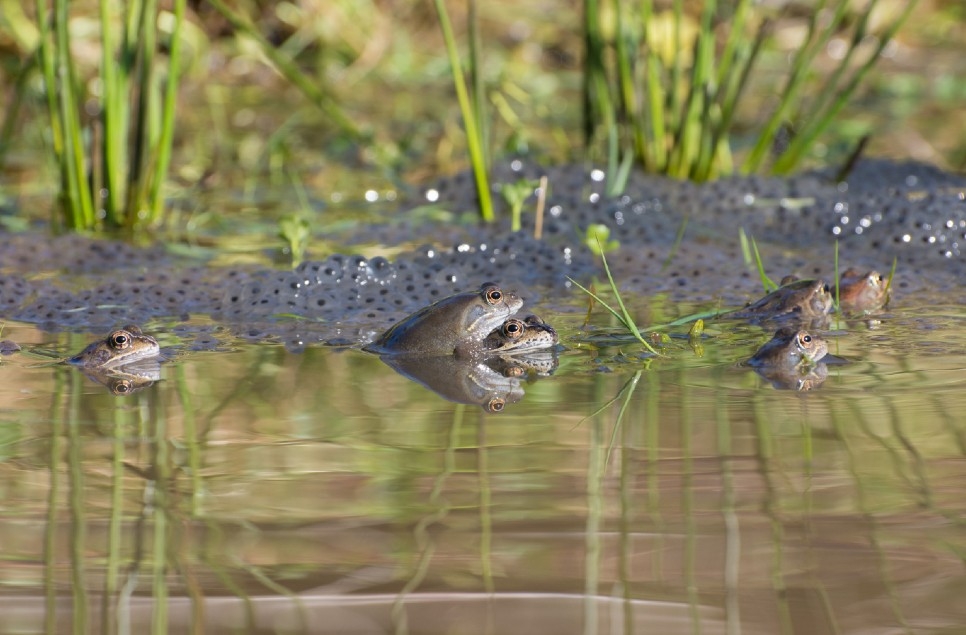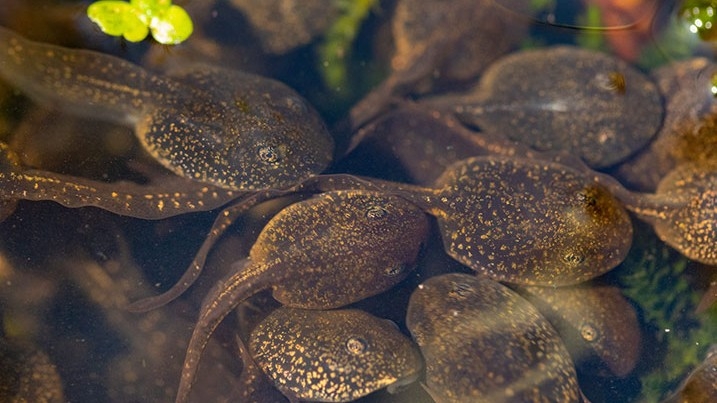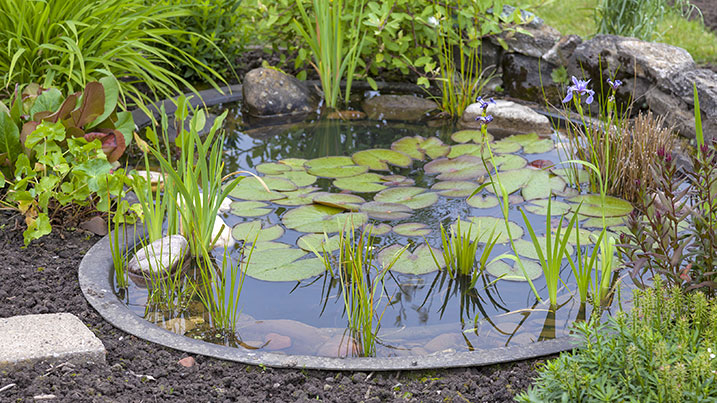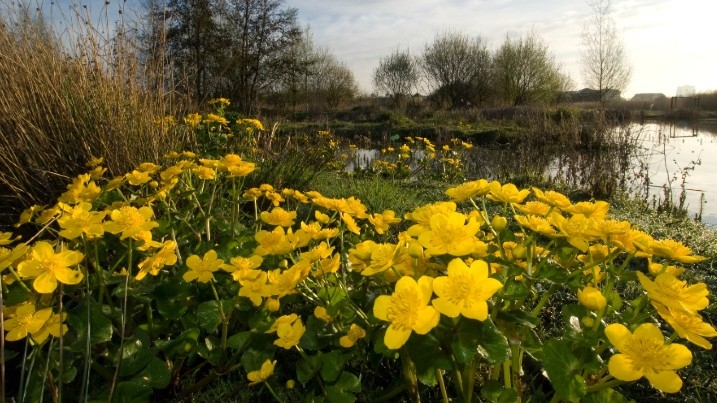How to tell the difference between frog and toad spawn
Have you spotted any frogspawn yet? Whether it’s in a local pond or your own back garden it’s always an exciting moment. Along with daffodils and birdsong it’s one of the first signs that spring is here. We know it can be hard to tell exactly what is wha

Amphibians are a group of small vertebrates that are defined by a very special set of adaptations. Frogs, toads, newts and salamanders are all part of this group. Amphibians all need water, or damp places to survive, and they all produce spawn in the spring.
The spawn you see in the water are the eggs, a little later in the season you’ll notice that the spawn has been replaced by larvae or tadpoles. The larvae are aquatic and free-swimming and when they get to a certain size they change again and develop legs. At this stage they also develop lungs so that eventually, they can hop out of the water as adults. They will then spend most of their lives on land.
This extraordinary process is known as metamorphosis.
Spot the difference
So, you’ve spotted some spawn, but how do you tell the difference between frog, toad and newt spawn? There are a few things to look out for that can help you work it out. Frogspawn is laid in big clumps of jelly in shallower water. When they hatch tadpoles are black and stick together in a big shoal.

Toads lay long strings of eggs which you’ll usually spot wrapped around vegetation in slightly deeper water. As tadpoles grow it’s easier to tell the difference: frog tadpoles change to more of a greenish grey colour with gold speckles and they no longer shoal. Toad tadpoles stay black.

Newt eggs are laid individually on submerged plant leaves and the tadpoles grow a frill behind their heads. These are known as efts, and they develop their front legs first, whereas frog and toad tadpoles develop back legs first.
How to look after spawn in your pond
If you’ve got spawn in your pond the best thing to do is to sit back and let it do its thing. At this stage your pond may contain a big black mass of writhing tadpoles. Unfortunately it’s a tough life for a tadpole – they have a number of natural predators and are susceptible to various amphibian diseases. Because of this, female frogs lay thousands of egg each year and only a tiny fraction of them will survive to adulthood.
Watch: Advice on how to help amphibians:
Don’t move spawn or tadpoles into a different pond, as this can spread non-native plant species and amphibian diseases. Ponds that already contain spawn may not be able to support the increased population, and ponds that don’t have any spawn are unlikely to be suitable for frogs – if they were suitable and well established, the spawn would already be there.
There are many reasons why a pond may not contain frogs but a common explanation is that newts prey on tadpoles, so if there are lots of newts, the frogs might not establish. However, if there are no tadpoles to feed the newts, there will be less newts, meaning frogs then have a chance to take over; populations of both species can go up and down. It's entirely natural and both are wonderful additions to your garden fauna.
Making your garden amphibian friendly
So how do you attract amphibians to your own garden? Even a small watery space - an old sink, a garden trug dug into the ground, or a washing up bowl – is likely to attract one species or another, but there are a few things you can do if you want to give them the best chance at survival. With 40% of amphibian species declining worldwide there’s a lot you can do to support them in your garden.
Garden ponds – of any shape or size - that are shaded and filled with the right, native pond plants create the perfect breeding ground for frogs. If you want to attract toads in particular, they do seem to prefer larger ponds.

Make sure your pond has shallow edges so frogs can get in and out easily. At least one of the shallower edges should taper off into surrounding rough, moist vegetation such as a leafy mulch which will offer them food, shelter and hibernation. Although frogs require shelter from the heat of the summer sun, make sure this isn't provided by too many overhanging trees in the garden as ponds need direct sunlight to thrive properly.
A good mixture of native pond plants is essential. Try water violets and marsh marigolds which are easy to grow and thrive in ponds. A mix of marginal and floating pond plants are ideal as this provides shelter for frogs, toads and newts.

Newts lay their eggs from spring to summer and need rafting pond plants with small leaves - the female will lay her eggs on the underside of a submerged leaf and wrap the egg up in it. If you’re lucky enough to attract a great crested newt you’ll need lots of floating pond weed to provide cover, but also an open space in the middle of the pond so they can perform their elaborate courtship dance in the spring.
Gardening for wetlands
Making a wetland in your garden or community space can be easy, inexpensive, and brings many benefits to people and wildlife.
Tips and ideas


